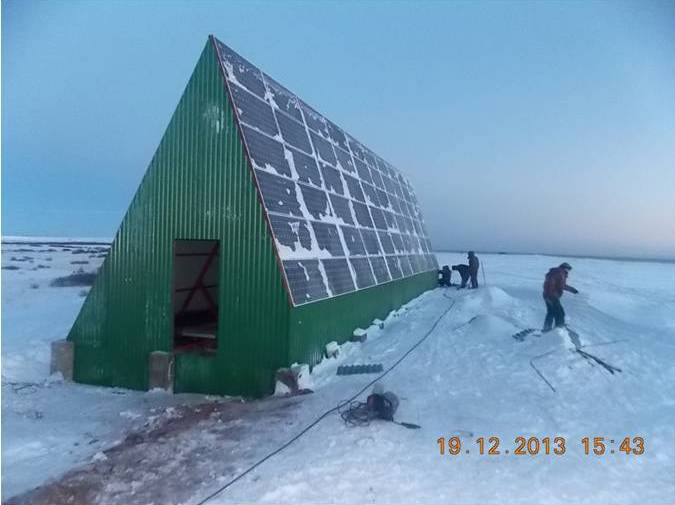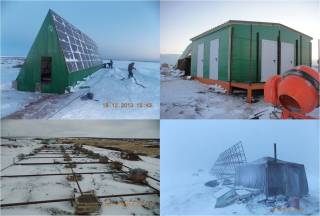
The system built to manage Russia’s nuclear legacy is crumbling, our new report shows
Our op-ed originally appeared in The Moscow Times. For more than three decades, Russia has been burdened with the remains of the Soviet ...
News

Publish date: October 9, 2014
Written by: Anna Kireeva
News
MURMANSK – The next year will see the installation of solar batteries, wind parks and new diesel electric installations in thee far-flung Murmansk Region villages in the Chavanga territory.
The effort is noteworthy as it signals an acknowledgement by Russian authorities that only renewables can do the job in some places, and also sheds a light on able-bodied nations who consistently dump solar and wind for other options.
In all supplying the woebegone villages with a renewable energy infrastructure will cost 104 million rubles ($2.5 million).
The project comes as the results of a competition for a municipal contract to modernize electricity in the remote villages of Chavanga, Tetrino and Chapoma in the Murmansk Region’s Terek district. The firm President Neva, which is involved in similar projects in the regional village of Pyalitsa, won out.
“Bellona has been suggesting the possibility of using renewable energy sources in remote communities of the Murmansk Region for several years,” said Yury Sergeyev, coordinator of renewable energy projects at Bellona Murmansk. “ We welcome the concrete steps the regional and local governments have taken in this direction.”
Russia’s official site for government procurement (in Russian) lists the price of the price of the 103 million rubles. The work is to be completed between the signing of the municipal contract and March 1, 2015. The regional administration will bear the brunt of that cost, footing 80 percent of the bill, followed by a 15 percent contribution from the federal government and the remaining 5 percent will be paid at a local level.
Successful pilot project
In March 2014, the Village of Pyalitsa saw the successful launch of a combined wind and diesel combo called “three in one” – a wind farm, a diesel power installation and solar batteries.

It consists of four wind energy installations each pumping 5 kilowatts of power, two diesel generators supplying 30 kilowatts each and 60 solar panels providing 15 kilowatts combined.
This project was launched by a federally funded regional program, and hence the 14 inhabitants of the snow-swept hamlet now have electricity 24 hours a day – a almost unimaginable improvement over the villages previous diesel generator, which worked from 8 am to 10 pm and required 90 tons of often impossible-to-deliver fuel a year.
Yury Korkonosov, deputy director for the Agency of Energy Efficiency for the Murmansk Region, told Bellona that where 12-hour electric supplies for Pyalitsa required about six tons of diesel fuel per month, the current situation of 24-hour electric supplies can be had for just one ton.
“The Pyalitsa project was a pilot project,” said Bellona Murmansk’s Sergeyev. “We are very happy that its results have turned out to be so positive, and that such experience can be transferred to other far-flung villages.”
More than a third of electricity from renewable sources
Korkonosov said all three villages for the next project are populated by about 190 people, but that during the summer, the population grows several times thanks to city dwellers who maintain dachas there.
In total, the three villages of Tetrino, Chapoma and Chavanga require 515 kilowatts of energy. Some 175 kilowatts (34 percent) of this will come from wind and solar sources, and the remainder from the four diesel generators. This makes these tiny villages pioneers among other municipalities in the region in terms of renewable energy development and use.
“Five hundred and fifteen kilowatts of power at start up is necessary for ensuring comfortable conditions and 24-hour electricity,” Korkonosov told Bellona. “When this comes to be, residents will begin using conventional appliances, which they at present don’t have. This will of course lead to increased demand. Therefore upon the successful development of the project, we will begin to think on its second stage – boosting capacity by two to three times.”
Korkonosov said that 70 percent of the work on the new power installations will be complete by New Year, and the rest will depend on weather conditions. The official hand off of the power installation to the villages is scheduled for March 1, 2015.
“This whole project is the initiative of the municipal authorities of the village region and is supported at a regional level,” said Bellona Murmansk’s Sergeyev. “This again confirms that when there is an interest on the spot, time and implementation can be found.”
Sergeyev continued to say that, “Bellona is sure that the current project will serve as an example and template for further similar projects for other leaders of distant settlements in the Murmansk region.”

Our op-ed originally appeared in The Moscow Times. For more than three decades, Russia has been burdened with the remains of the Soviet ...

The United Nation’s COP30 global climate negotiations in Belém, Brazil ended this weekend with a watered-down resolution that failed to halt deforest...

For more than a week now — beginning September 23 — the Zaporizhzhia Nuclear Power Plant (ZNPP) has remained disconnected from Ukraine’s national pow...

Bellona has taken part in preparing the The World Nuclear Industry Status Report 2025 and will participate in the report’s global launch in Rome on September 22nd.